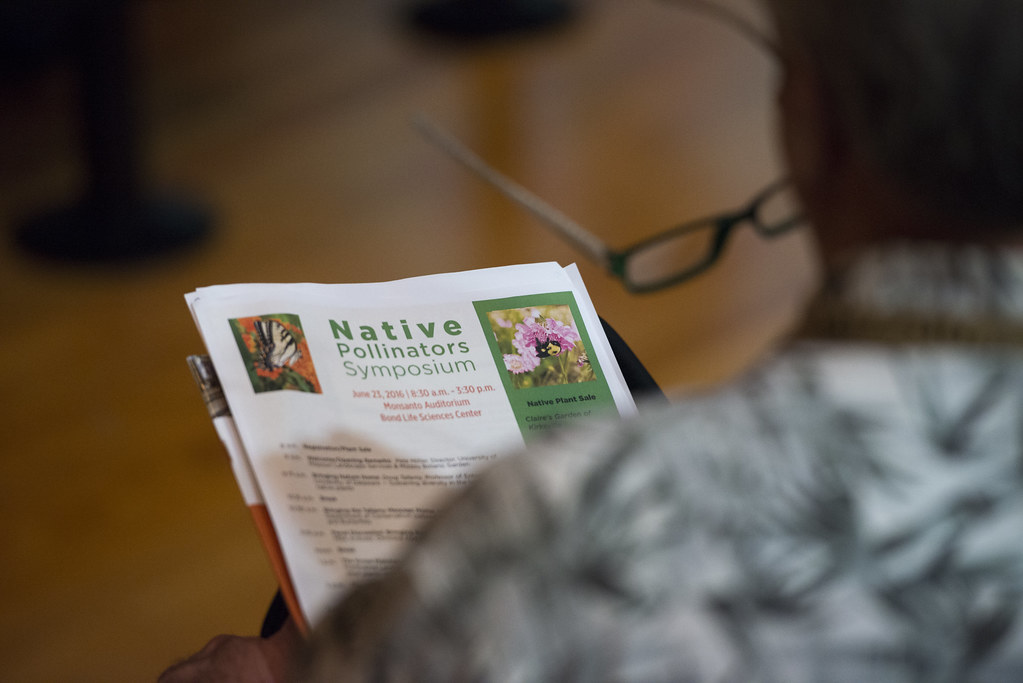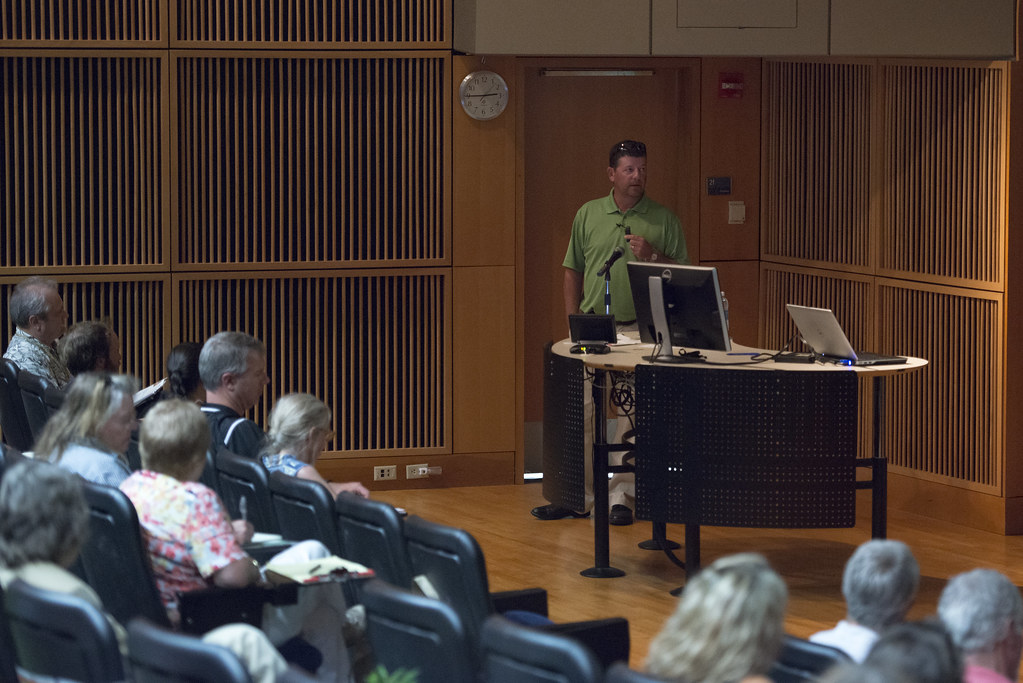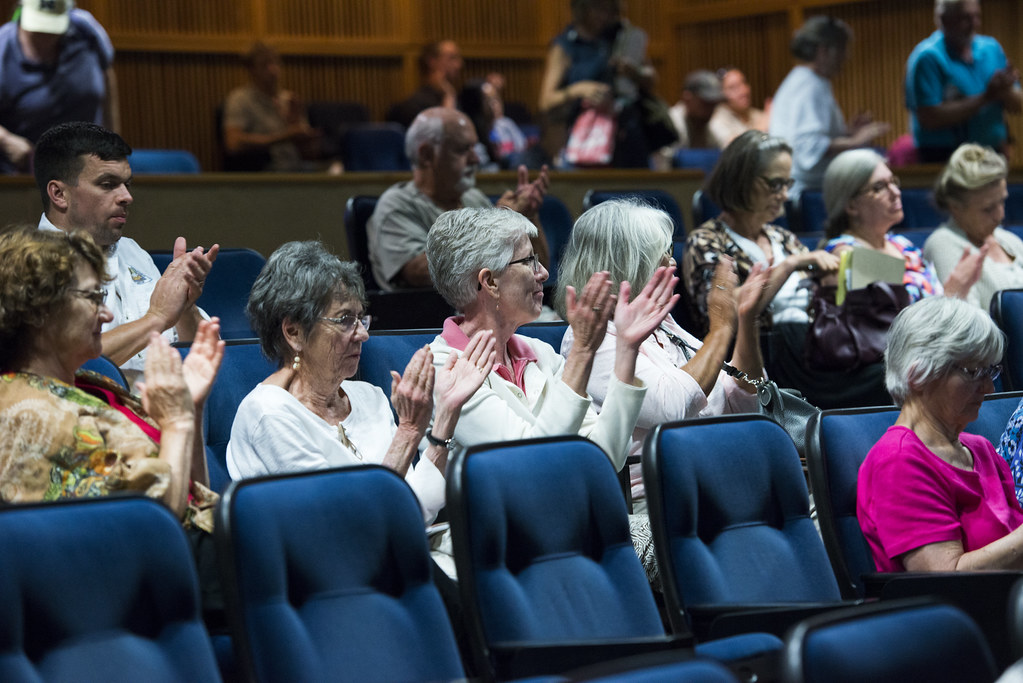By Zivile Raskauskaite | MU Bond Life Sciences Center

While walking through the A.L. Gustin Golf Course in Columbia you might be surprised by blossoms of milkweed or wild bergamot.
While some golfers consider it a pests, golf course superintendent Isaac Breuer said properly managed wildflowers in the golf course turned into an important sanctuary for pollinators, such as bees, birds and butterflies.

“A lot of our food comes from pollinators,” Breuer said during a panel at the Native Pollinators Symposium on Thursday, June 23, in Columbia. “If I can help pollinators through the work at the golf course, I am on board.”
About 90 percent of all plant species need the help of pollinating animals. It has been estimated that pollinators deliver one out of every three mouthfuls of food people eat. The population of pollinators is dwindling, so the human-made habitats of native wildflowers can help to maintain the number of pollinators.
The practice of planting native plants at the A.L. Gustin Golf Course was one example of local initiatives to maintain native pollinator populations. Mizzou Botanic Garden organized the Native Pollinators Symposium as a part of National Pollinators’ Week, which ran June 20-26. People gathered in Monsanto Auditorium at the University of Missouri’s Bond Life Sciences Center to learn more about the importance of pollinators.

Breuer shared his experience enriching the environment and turning the 18-hole golf course into pollinator-friendly. His staff worked together with Missouri Department of Conservation to establish natural habitats in specific areas of the golf course.
Now, the mix of native grasses and wildflowers cover more than seven acres of the course. Breuer said they do not affect the pace of the game because native plants are located in the areas where golfers usually do not play.
Golfers can see asters, blazing star, coreopsis, wild bergamot, purple coneflower, rattlesnake master and black eyed Susan blooming in spring and summer. The habitat needs 2-3 years to mature.
That time commitment pays off. By then, it not only looks good and draws wildlife, but also serves as education tool on the importance of natural habitat and native pollinators.
“This golf course is my office, so I try to do things out there that can make the golfers and the environment happy,” Breuer said.

